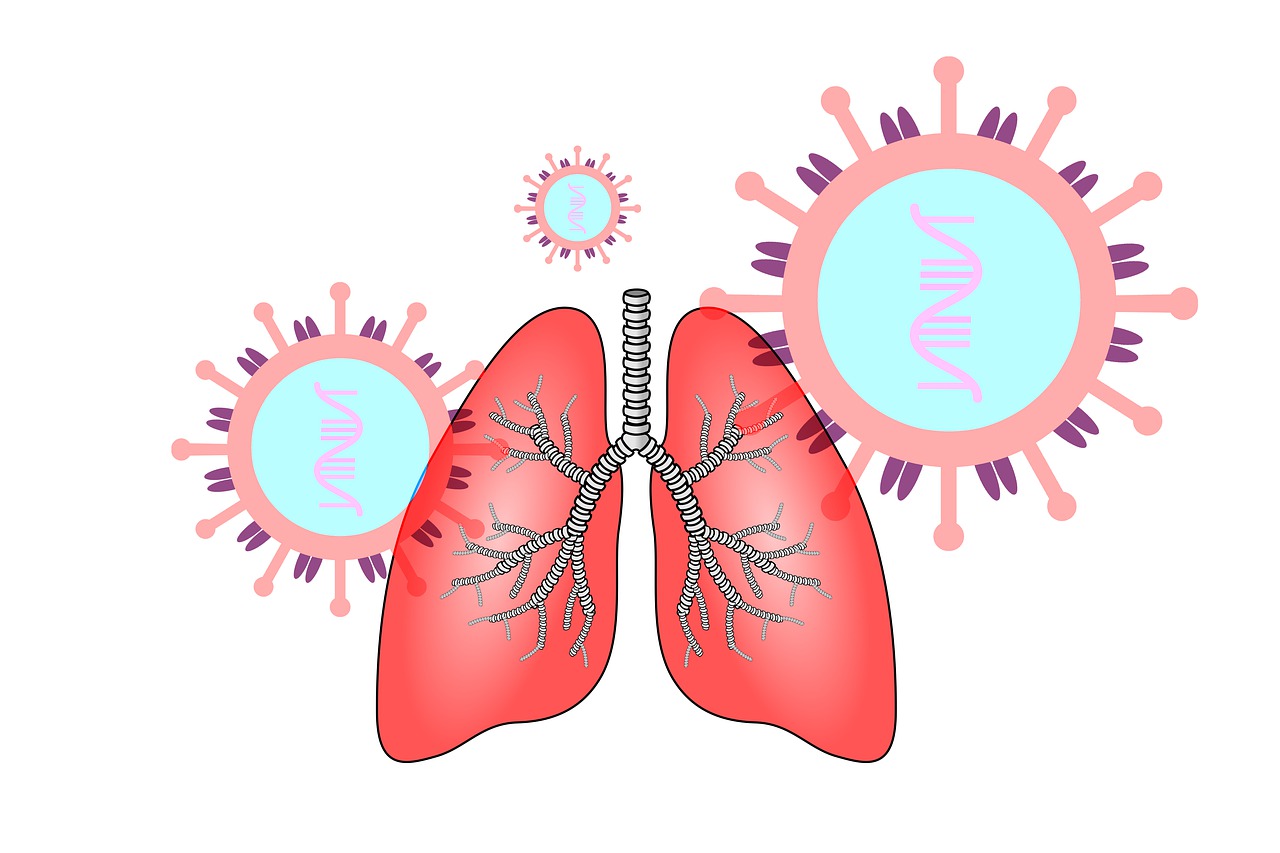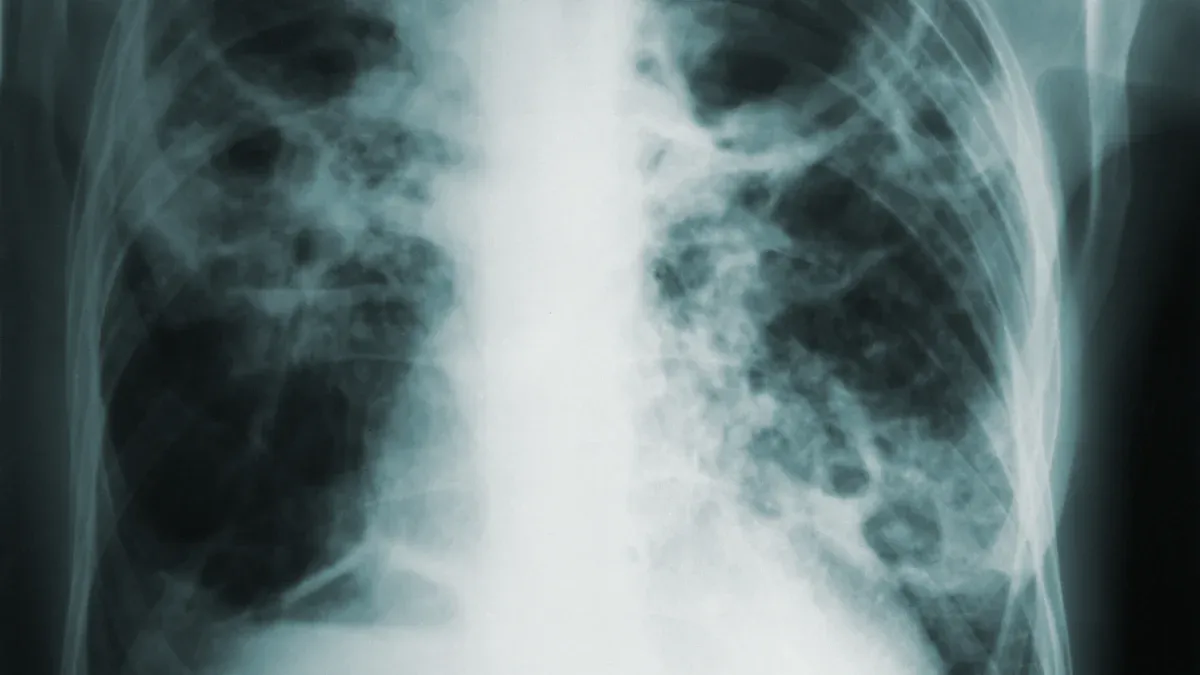Understanding Bronchial Adenomas and Carcinoids

Bronchial adenomas/carcinoids are rare tumors that develop in the airways. These include neuroendocrine carcinoid tumors, which account for about 85% of all bronchial adenomas. While they represent only 1-3% of pulmonary malignancies, their potential to invade nearby tissues makes early detection essential. Many patients, up to 60%, show no symptoms, which increases the risk of misdiagnosis. When symptoms do appear, they may include coughing, hemoptysis, or recurrent infections. Timely diagnosis and treatment, such as surgery, can significantly improve outcomes and prevent complications.
Key Takeaways
Bronchial adenomas and carcinoids are rare growths in the lungs. Finding them early helps improve treatment success.
Carcinoid tumors are the most common type. Typical carcinoids grow slowly, but atypical ones grow faster and are more harmful.
Symptoms can include a long-lasting cough, coughing up blood, or trouble breathing. Some people may not have symptoms at first, making it harder to diagnose.
Surgery works best for early-stage tumors and has high success rates. Other treatments include radiation, chemotherapy, and special targeted medicines.
Staying healthy and avoiding risks like smoking can lower the chance of getting these tumors.
Types of Bronchial Adenomas/Carcinoids

Carcinoid Tumors
Carcinoid tumors are the most common type of bronchial adenomas/carcinoids. These tumors originate from neuroendocrine cells in your airways and can vary in behavior and prognosis. You may encounter two main subtypes based on their location: central and peripheral carcinoids. Central carcinoids form in the larger airways (bronchi), while peripheral carcinoids develop in smaller airways (bronchioles).
Carcinoid tumors are further classified as typical or atypical. Typical carcinoids make up about 90% of lung carcinoids. They grow slowly and are less likely to spread, offering a better prognosis. Atypical carcinoids, on the other hand, grow faster and are more aggressive, increasing the likelihood of metastasis. The table below highlights these differences:
Type | Description | Behavior and Prognosis |
|---|---|---|
Central carcinoids | Form inside or on the bronchi (large airways). | Typically less aggressive. |
Peripheral carcinoids | Develop in the bronchioles (smaller airways). | Behavior varies. |
Typical carcinoids | 90% of lung carcinoids, slow-growing. | Better prognosis, more treatable. |
Atypical carcinoids | Faster dividing, more aggressive. | Worse prognosis, harder to treat. |
Adenoid Cystic Carcinoma
Adenoid cystic carcinoma accounts for about 10% of bronchial adenomas. This tumor has a low-grade malignant nature, but it tends to spread along the submucosal plane and perineural lymphatics. You may find that complete surgical removal is challenging due to its extensive spread. Local recurrence is also a possibility, which makes long-term monitoring essential.
Key features of adenoid cystic carcinoma include:
Low-grade malignancy.
Submucosal spread along perineural lymphatics.
Difficulty in achieving complete surgical resection.
Potential for local recurrence.
Mucoepidermoid Carcinoma
Mucoepidermoid carcinoma arises from glandular tissue in the submucosa of your trachea and bronchi. This tumor contains a mix of mucus-producing, glandular, and squamous epithelial cells. Its classification depends on histologic appearance, with tumors being either low grade or high grade.
Low-grade tumors often have cystic components and mild cellular abnormalities. High-grade tumors, however, show solid growth, mitotic activity, and necrosis. These aggressive tumors are more likely to involve regional lymph nodes.
Key characteristics of mucoepidermoid carcinoma include:
Originates from glandular tissue in the trachea and bronchi.
Contains a mix of mucus-producing and squamous cells.
Low-grade tumors are less aggressive, while high-grade tumors are more invasive.
High-grade tumors frequently involve regional lymph nodes.
Causes of Bronchial Adenomas/Carcinoids
Understanding the causes of bronchial adenomas/carcinoids can help you recognize potential risk factors and take preventive measures. These tumors often result from a combination of genetic predispositions, environmental exposures, and lifestyle choices.
Genetic Factors
Genetic mutations play a significant role in the development of bronchial adenomas/carcinoids. If you have a family history of certain genetic conditions, your risk may increase. For example, mutations in the MEN1 and ATRX genes are commonly associated with bronchial carcinoids. The table below highlights these genetic mutations and their related conditions:
Genetic Mutation | Associated Condition |
|---|---|
MEN1 | Bronchial carcinoids |
ATRX | Bronchial carcinoids |
If you suspect a genetic predisposition, consulting a healthcare provider for genetic testing can provide clarity.
Environmental Exposures
Exposure to harmful environmental factors can also contribute to the development of these tumors. Prolonged contact with industrial chemicals, such as asbestos or radon, may damage your airway tissues over time. Air pollution, particularly in urban areas, has been linked to respiratory issues that could increase your risk. Protecting yourself by avoiding polluted environments and wearing protective gear in hazardous workplaces can reduce this risk.
Smoking and Lifestyle Factors
Smoking remains one of the most significant lifestyle factors linked to respiratory tumors. If you smoke, the chemicals in tobacco can irritate and damage your airway lining, potentially leading to tumor formation. Even secondhand smoke exposure can increase your risk. Additionally, an unhealthy diet and lack of exercise may weaken your immune system, making it harder for your body to fight abnormal cell growth. Adopting a healthy lifestyle, including quitting smoking and maintaining a balanced diet, can lower your chances of developing bronchial adenomas/carcinoids.
Symptoms of Bronchial Adenomas/Carcinoids
General Symptoms
Bronchial adenomas/carcinoids often present with symptoms that overlap with other respiratory conditions. However, many patients, up to 60%, may not experience any symptoms initially. When symptoms do occur, they can include:
Hemoptysis (coughing up blood).
Recurrent respiratory infections, such as pneumonia.
Shortness of breath or difficulty breathing (dyspnea).
Wheezing or stridor (a high-pitched, noisy sound during breathing).
Fever in some cases.
These symptoms often mimic common respiratory illnesses, which can delay diagnosis. If you notice any of these signs, especially if they persist or worsen, consulting a healthcare provider is crucial.
Symptoms of Carcinoid Tumors
Carcinoid tumors in the airways can cause a range of symptoms depending on their size and location. You might experience:
Persistent cough, which may occasionally be bloody.
Wheezing and shortness of breath.
Facial flushing, where your face feels warm and appears red.
Diarrhea or a fast heartbeat in rare cases.
Weakness, drowsiness, or easy bruising.
In severe cases, carcinoid syndrome may develop, leading to high blood sugar, high blood pressure, or increased body and facial hair. These symptoms are less common but require immediate medical attention.
Symptoms of Adenoid Cystic and Mucoepidermoid Carcinomas
Adenoid cystic carcinoma (ACC) and mucoepidermoid carcinoma (MEC) often differ in how they present symptoms. ACC tends to spread along the submucosal plane, which means you might not notice symptoms until the disease progresses. In contrast, MEC often shows more distinct signs based on its location. You could experience symptoms like persistent cough, difficulty breathing, or localized chest pain. High-grade MEC may also involve regional lymph nodes, leading to more pronounced symptoms.
Recognizing these differences can help you understand the importance of early detection and tailored treatment approaches for these specific types of bronchial adenomas/carcinoids.
Diagnosis of Bronchial Adenomas/Carcinoids
Accurate diagnosis of bronchial adenomas/carcinoids involves a combination of imaging, biopsy, and laboratory tests. These methods help confirm the presence of tumors and guide treatment decisions.
Imaging Techniques
Imaging plays a crucial role in identifying bronchial adenomas/carcinoids. Different techniques offer varying levels of effectiveness:
Imaging Technique | Effectiveness |
|---|---|
Chest Radiography | Often nondiagnostic; may show nodules or masses but normal in about 5% of carcinoid patients. |
CT Scanning | Considered the best imaging modality; provides detailed visualization of tumors and associated structures. |
MRI | Used when CT findings are unclear; less common for initial diagnosis. |
PET Scans | Limited reliability due to low metabolic activity of carcinoids; routine use discouraged. |
You may start with a chest X-ray, but CT scans are typically more effective for detailed imaging. MRIs are helpful when CT results are inconclusive, while PET scans are rarely used due to their limited reliability.
Biopsy Procedures
Biopsy procedures confirm the diagnosis by analyzing tissue samples. Several advancements have improved their accuracy:
Fine-needle aspiration (FNA) biopsy works well for peripheral lesions and reduces diagnostic errors.
Bronchoscopy detects about 80% of bronchial adenomas. It allows direct visualization and sampling of tumors.
Flexible bronchoscopy is a primary tool for central lesions, though it may not reach peripheral areas.
These techniques ensure precise diagnosis, especially when imaging results are unclear.
Blood and Hormone Tests
Blood and hormone tests can detect markers associated with bronchial adenomas/carcinoids. Elevated levels of serotonin or chromogranin A may indicate carcinoid tumors. These tests also help monitor hormone-related symptoms, such as flushing or diarrhea. While not definitive, they provide valuable insights when combined with imaging and biopsy results.
Early diagnosis improves treatment outcomes. If you experience persistent respiratory symptoms, consult a healthcare provider for evaluation.
Treatment for Bronchial Adenomas/Carcinoids

Surgery
Surgery remains the most effective treatment for bronchial adenomas/carcinoids. Doctors aim to remove the tumor completely while preserving as much lung function as possible. This approach often involves radical surgery, such as lobectomy or pneumonectomy, depending on the tumor's size and location. Studies show that surgical resection offers excellent outcomes. For example, in a study of 29 patients, 62% underwent lobectomy or pneumonectomy, achieving a 5-year survival rate of approximately 96%.
Time Frame | Survival Rate |
|---|---|
5-year | 92.4% |
10-year | 88.3% |
These statistics highlight the high success rate of surgery in treating bronchial adenomas. If you undergo surgery, your healthcare team will focus on minimizing complications and ensuring a smooth recovery.
Radiation Therapy
Radiation therapy serves as an alternative or complementary treatment when surgery is not feasible. This method uses high-energy rays to target and destroy cancer cells. It is particularly useful for patients with inoperable tumors or those who cannot tolerate surgery due to other health conditions. Radiation therapy also helps reduce the risk of recurrence by targeting residual cancer cells after surgery. You may experience side effects like fatigue or skin irritation, but these are usually manageable with proper care.
Chemotherapy
Chemotherapy plays a crucial role in treating advanced bronchial carcinoids, especially when the cancer has spread. This treatment uses drugs to kill or slow the growth of cancer cells. It is effective in about one-third of midgut carcinoids and shows even better results for foregut and atypical carcinoids. Combining chemotherapy with other treatments, such as Sandostatin and low-dose alpha-Interferon, can stabilize or shrink tumors in up to 75% of cases. If your doctor recommends chemotherapy, they will tailor the regimen to your specific needs, balancing effectiveness with potential side effects.
Early and appropriate treatment significantly improves outcomes for bronchial adenomas/carcinoids. Discuss all available options with your healthcare provider to determine the best approach for your condition.
Immunotherapy
Immunotherapy is an emerging treatment option for bronchial adenomas/carcinoids. This approach helps your immune system recognize and attack tumor cells more effectively. Unlike traditional treatments, immunotherapy focuses on enhancing your body’s natural defenses rather than directly targeting the tumor.
One promising method involves immune checkpoint inhibitors. These drugs block proteins that prevent your immune cells from attacking cancer. By removing these barriers, your immune system can respond more aggressively to abnormal cells. Researchers are also exploring vaccines designed to stimulate your immune system against specific tumor markers.
You might benefit from immunotherapy if other treatments, such as surgery or radiation, are not suitable. However, this approach is still under investigation for bronchial adenomas/carcinoids. Clinical trials are ongoing to determine its effectiveness and safety. If you consider immunotherapy, your doctor will evaluate your condition and discuss whether this option fits your treatment plan.
Targeted Therapy
Targeted therapy offers a more precise approach to treating bronchial adenomas/carcinoids. Instead of attacking all rapidly dividing cells, these treatments focus on specific molecules or pathways that tumors rely on to grow. This precision reduces damage to healthy tissues and minimizes side effects.
Several targeted therapies are under investigation. For example:
mTOR inhibitors aim to block a pathway that helps bronchial carcinoid cells divide and grow.
Other therapies focus on disrupting blood supply to the tumor, starving it of nutrients.
These treatments are particularly useful for advanced cases where surgery or radiation may not be effective. Targeted therapy often works well in combination with other treatments, enhancing overall outcomes. If you explore this option, your healthcare provider will tailor the therapy to your tumor’s unique characteristics.
Advances in immunotherapy and targeted therapy offer hope for more effective and personalized treatments. Discuss these options with your doctor to understand how they might benefit you.
What to Expect During and After Treatment
Preparing for Treatment
Getting ready for treatment involves several important steps to ensure the best possible outcomes. Your healthcare team will evaluate your medical history to identify any conditions that could affect the treatment process. For example, they may focus on chronic obstructive pulmonary disease (COPD) or diabetes mellitus. Pulmonary function tests, such as spirometry or arterial blood gas analysis, help assess how well your lungs are working. Cardiac evaluations, including electrocardiograms or stress tests, may also be necessary to check your heart's health.
These assessments provide a clear picture of your overall condition. They help your doctor determine the safest and most effective treatment plan for you. Following these steps can reduce risks and improve recovery after treatment.
Recovery and Follow-Up Care
Recovery after treatment for bronchial adenomas/carcinoids varies depending on the type of procedure you undergo. If you have surgery, you may need to stay in the hospital for a few days. During this time, your medical team will monitor your breathing and manage any discomfort. Once you return home, you should focus on rest and follow your doctor’s instructions carefully.
Follow-up care plays a critical role in your recovery. Regular check-ups allow your doctor to monitor your progress and detect any signs of recurrence early. Imaging tests, such as CT scans, may be part of these visits. You might also need pulmonary rehabilitation to strengthen your lungs and improve your breathing. Staying consistent with follow-up appointments ensures a smoother recovery process.
Long-Term Outlook and Monitoring
The long-term outlook for bronchial adenomas/carcinoids depends on factors like the tumor type and how early it was treated. Many patients experience excellent outcomes, especially when the tumor is detected early and removed completely. However, ongoing monitoring remains essential.
Your doctor may recommend periodic imaging tests and blood work to check for any signs of recurrence. Maintaining a healthy lifestyle, including avoiding smoking and staying active, can also improve your long-term health. By staying proactive and attending regular follow-ups, you can manage your condition effectively and enjoy a better quality of life.
Understanding bronchial adenomas/carcinoids can help you recognize their symptoms and seek timely treatment. These rare airway tumors include different types, such as carcinoid tumors, adenoid cystic carcinoma, and mucoepidermoid carcinoma. Early diagnosis improves outcomes, especially when symptoms like persistent cough or difficulty breathing appear. Treatments like surgery, radiation, and targeted therapy offer effective options tailored to your condition.
You should consult a healthcare professional if you notice any concerning symptoms. Personalized care ensures the best approach for your health. Staying informed and proactive can make a significant difference in managing these conditions.
FAQ
What are bronchial adenomas and carcinoids?
Bronchial adenomas and carcinoids are rare tumors that develop in your airways. They include neuroendocrine carcinoid tumors, which can be benign or malignant. Early detection improves outcomes, so recognizing symptoms like persistent cough or difficulty breathing is essential.
Are bronchial adenomas/carcinoids cancerous?
Some bronchial adenomas/carcinoids are cancerous, while others are benign. For example, typical carcinoids grow slowly and rarely spread, but atypical carcinoids are more aggressive. Your doctor will determine the tumor type through imaging and biopsy.
How are these tumors diagnosed?
Doctors use imaging techniques like CT scans and MRIs to locate tumors. A biopsy confirms the diagnosis by analyzing tissue samples. Blood tests may also detect hormone markers linked to carcinoid tumors.
Can bronchial adenomas/carcinoids be prevented?
You can reduce your risk by avoiding smoking, limiting exposure to harmful chemicals, and maintaining a healthy lifestyle. Genetic factors may still play a role, so regular check-ups are important if you have a family history.
What is the survival rate for treated bronchial adenomas/carcinoids?
Survival rates depend on the tumor type and treatment timing. For example, surgical removal of typical carcinoids offers a 5-year survival rate of over 90%. Early diagnosis and treatment significantly improve your chances.
Tip: If you experience persistent respiratory symptoms, consult a healthcare provider promptly. Early action can save lives.
---
ℹ️ Explore more: Read our Comprehensive Guide to All Known Cancer Types for symptoms, causes, and treatments.
See Also
Exploring Lung Adenocarcinoma Causes and Associated Risk Factors
Essential Information on Symptoms of Adrenocortical Carcinoma
A Guide to Recognizing Adrenocortical Adenoma Symptoms and Treatments
